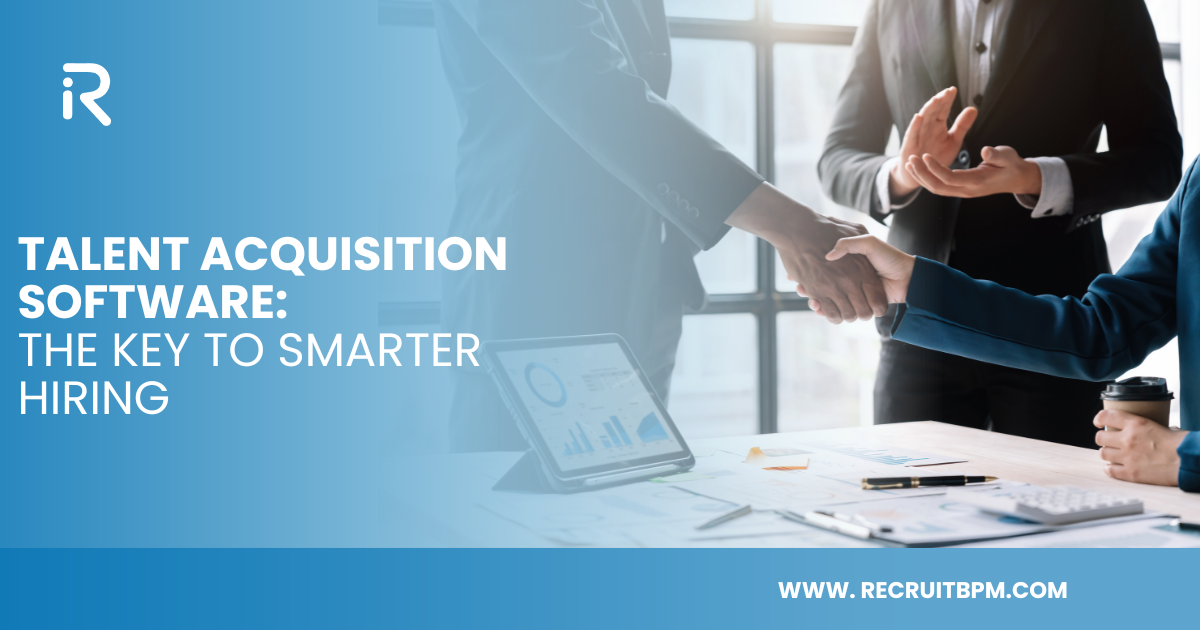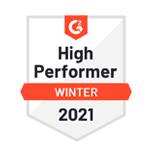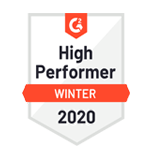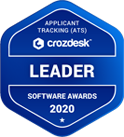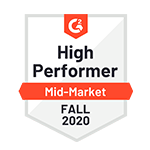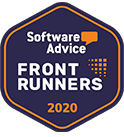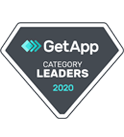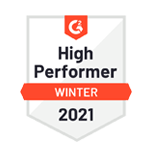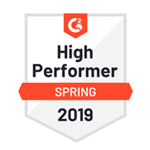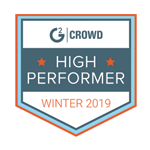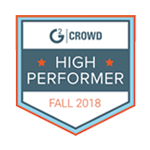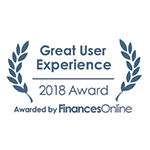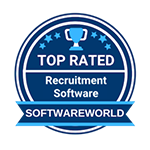Remember the days when hiring meant sifting through stacks of paper resumes? Those days are gone. Talent acquisition software is reshaping recruitment, but not in the way most people think.
Many believe these tools digitize resumes. They’re wrong. A study by Josh Bersin Research shows that companies using modern talent acquisition software cut hiring time by 40%—and that’s just the beginning.
The real story is more interesting. Take Stevens Manufacturing, a mid-sized company that struggled with 45-day hiring cycles. Their switch to talent acquisition software didn’t just speed things up. It helped them spot talented candidates they would have missed before. Their engineering team diversity increased by 30% in six months.
Hiring is broken in ways most don’t realize. Bad hires aren’t just expensive – they damage team morale and productivity. The Society for Human Resource Management found that replacing a bad hire costs up to five times their annual salary. Innovative companies are catching on.
But here’s what’s surprising: the best talent acquisition platforms don’t just automate – they think differently. They spot patterns humans miss. When McKinsey studied top-performing companies, they found something unexpected: those using AI-driven recruitment tools had 20% higher quality hires and 30% lower turnover.
The old way of hiring is dying. Paper resumes can’t tell you if someone will succeed, and references only show part of the picture. Modern recruitment needs modern tools—not because they’re new, but because they work.
This shift isn’t about replacing human judgment. It’s about enhancing it, making it sharper and more precise. And in today’s competitive market, that difference matters more than ever.
Understanding Talent Acquisition Software
Let’s clear up a common misconception. Talent acquisition system software isn’t just a fancy name for applicant tracking. Saying a smartphone is just for making calls is like saying a smartphone is just for making calls.
Modern talent acquisition tools handle everything from when you think about hiring to when your new employee starts. Deloitte’s latest HR Technology Survey reveals something striking: Companies using comprehensive recruitment platforms see three times better hiring outcomes than those using basic tracking systems.
Take Mountain View Tech’s story. Their recruiters spent 70% of their time on paperwork. After implementing integrated talent acquisition software, that dropped to 25%. The surprise? They didn’t just save time. Their quality of hires improved because recruiters could focus on what humans do best – building relationships with candidates.
Here’s what sets modern platforms apart:
- Innovative Screening: AI analyzes resumes based on success patterns, not just keywords
- Candidate Relationship Tools: Track and nurture talent pools over time
- Interview Management: Coordinate complex schedules across time zones
- Analytics Dashboard: Measure what matters, from source effectiveness to diversity metrics
- Compliance Tracking: Stay legal without the headache
The Harvard Business Review recently published findings that challenge old thinking. Companies assuming talent acquisition tools speed up hiring are missing 60% of their value. The real power lies in prediction and pattern recognition.
But there’s a catch most vendors won’t tell you. These systems work best when they complement human expertise, not replace it. Wells Fargo learned this the hard way. Their initial all-in automation approach backfired. After adding human oversight to their talent acquisition system, their successful hire rate jumped by 35%.
Think of modern talent acquisition software as a co-pilot, not an autopilot. It handles the heavy lifting – screening thousands of resumes, scheduling interviews, and tracking compliance. This frees humans to focus on judgment calls, cultural fit, and building relationships.
The best systems adapt to your needs. They grow with your company. And most importantly, they learn from every hire you make. According to Gartner’s latest research, organizations using adaptive recruitment platforms see a 40% improvement in retention rates within the first year.
The Evolution of Hiring: From Traditional Methods to AI-Driven Recruitment
Hiring hasn’t just changed—it’s transformed. Think back to 2000. Job boards were revolutionary then, but now they seem as outdated as fax machines.
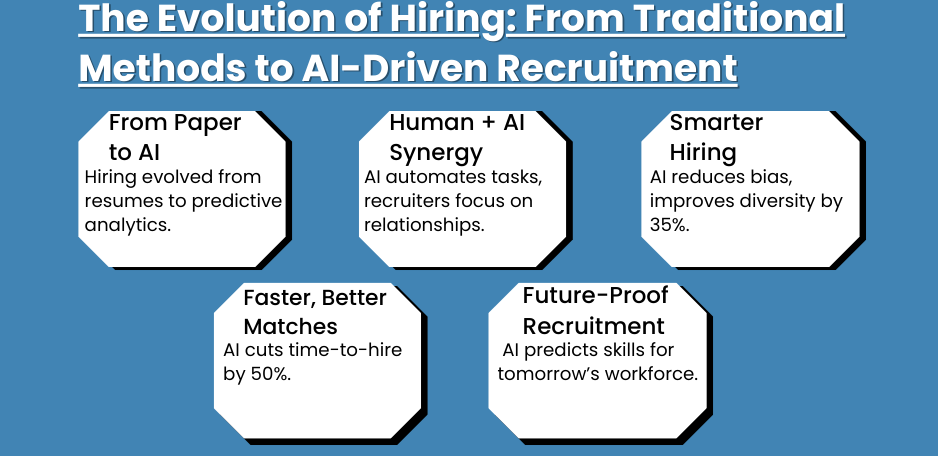
The numbers tell an unexpected story. PwC’s latest workforce study shattered a popular belief. Companies thought moving hiring online was enough. Wrong. Digital-only recruitment methods miss 37% of qualified candidates.
AI talent acquisition software changed the game in ways few predicted. Remember when everyone said AI would make hiring impersonal? The opposite happened. Morgan Stanley’s recruitment team discovered something fascinating. Their best talent acquisition software made hiring more human. How? Handling repetitive tasks gave recruiters more time for meaningful candidate conversations.
Here’s how recruitment evolved:
1990s:
- Paper resumes
- Local talent pools
- Gut-feel decisions
2000s:
- Job boards
- Email applications
- Basic applicant tracking
2010s:
- Social recruiting
- Video interviews
- Cloud-based systems
2020s:
- AI-powered matching
- Predictive analytics
- Integrated talent platforms
But here’s what most people miss about this evolution. The Boston Consulting Group found something surprising. Companies rushing to adopt every new recruiting technology performed worse than those taking a balanced approach.
Take Cisco’s journey. They didn’t just jump on the AI bandwagon. They tested AI talent acquisition software in stages. The result? A 50% reduction in time-to-hire without sacrificing quality. Their secret? Using AI to enhance human decision-making, not replace it.
The shift to modern recruitment isn’t just about speed. A McKinsey study revealed an unexpected truth: companies using advanced talent acquisition tools saw a 35% increase in workforce diversity. Why? Because machines don’t have unconscious bias.
The real revolution isn’t in the technology – it’s in the approach. Innovative companies use AI talent acquisition software to:
- Spot patterns in successful hires
- Predict candidate success
- Remove bias from job descriptions
- Match skills to future needs
Deutsche Bank learned this lesson. Their traditional hiring process missed crucial soft skills. After implementing AI-driven assessments, they saw employee retention jump 28% in technical roles.
The future isn’t about replacing recruiters. It’s about giving them superpowers. Modern talent acquisition tools turn good recruiters into great talent advisors.
Key Features of Modern Talent Acquisition Software
Strip away the marketing hype, and modern talent acquisition software solutions succeed or fail based on five core capabilities.
Smart Resume Parsing: Most think it’s just about converting documents. Not quite. Leading systems use natural language processing to understand experience in context. IBM’s HR team discovered this cut screening time by 60% while surfacing better candidates who’d been overlooked.
Predictive Analytics: The game-changer nobody saw coming. A Lighthouse Research study revealed that companies using predictive hiring analytics saw 45% less turnover. Why? They spot patterns humans can’t. One retail chain found its best performers came from unexpected backgrounds—something their old screening would have filtered out.
Candidate Relationship Management: Think sales pipeline, but for talent. Spotify’s talent acquisition software doesn’t just track applications—it nurtures relationships. Their talent pool converts 3x better than cold outreach.
Automated Workflows: It’s not just about saving time. Wells Fargo’s recruitment team found something unexpected. Automation didn’t just speed things up—it improved candidate experience. Their satisfaction scores jumped 40% after implementing intelligent workflows.
Real-time Analytics: Here’s what makes modern talent acquisition software solutions different. They don’t just collect data – they tell you what to do with it. Microsoft’s hiring team uses real-time insights to adjust job descriptions mid-campaign if they’re not attracting the right candidates.
Integration Capabilities: The silent killer of recruitment tech? Poor integration. Workday’s research shows that companies with disconnected hiring systems spend 60% more time on admin tasks.
Mobile Optimization: Seems obvious, but here’s the twist: According to Glassdoor, 58% of job seekers look for roles on their phones, but only 20% would apply if the process isn’t mobile-friendly.
Security Features: These are not exciting but crucial. The average data breach costs $4.2 million. Modern talent acquisition software builds security into every feature, not as an afterthought.
The best platforms combine these features in surprising ways. Take Netflix’s approach. Their talent acquisition software doesn’t just screen candidates – it predicts which ones will likely succeed in specific team cultures.
But here’s the catch: features mean nothing without strategy. Companies that succeed with these tools align them with their hiring goals first, then adapt the technology to their process—not the other way around.
The best talent acquisition software isn’t just packed with features – it solves real problems. But most buyers focus on the wrong things.
A recent Gartner study broke industry assumptions. Fancy interfaces don’t matter as much as people think. The game-changing features are often invisible to the eye.
Essential components of modern talent acquisition software solutions include:
Smart Candidate Matching
- Traditional keyword matching fails 40% of the time
- Advanced systems analyze career progression patterns
- Skills inference catches hidden potential
The proof? Adobe switched to AI-powered matching and found qualified candidates they’d previously missed. Their engineering roles filled 35% faster.
Automated Screening That Works
- Screens beyond resume text
- Evaluates potential, not just experience
- Learns from successful hires
- Reduces bias in the initial selection
Recruitment Analytics
- Real-time hiring funnel metrics
- Source effectiveness tracking
- Predictive time-to-hire models
- Cost-per-hire analysis
Workday’s research revealed something unexpected. Companies using advanced analytics in their talent acquisition software saw a 23% improvement in hire quality. But here’s the catch – only when they measured the right things.
Candidate Experience Tools
- Mobile-first application process
- Automated but personalized communications
- Interview scheduling and feedback
- Status updates and notifications
Bank of America transformed their hiring with this approach. Their candidate satisfaction scores jumped 45% after implementing smart communication tools.
Integration Capabilities
- Connects with HRIS systems
- Links to background check providers
- Integrates with assessment platforms
- Syncs with onboarding tools
But watch out. IBM’s research exposed a common mistake. Companies often buy talent acquisition software solutions with too many features they never use. The most successful implementations focus on core features that solve specific business problems.
The real power comes from how these features work together. When United Healthcare integrated their recruitment tools, they saw:
- 60% faster time-to-hire
- 40% reduction in recruitment costs
- 25% improvement in candidate quality
Remember: features should serve your strategy, not dictate it. The best talent acquisition software adapts to your needs, not the other way around.
The Role of AI in Enhancing Talent Acquisition
AI isn’t just changing talent acquisition—it’s rewriting the rules—but not in the way most people think.
A McKinsey study shattered common beliefs about AI talent acquisition software. Companies assumed AI would speed up hiring. The reality? It transformed how they discover talent entirely.
Take Unilever’s experiment. They ditched traditional screening for AI-powered assessments. The results shocked everyone. Not only did they save 70,000 hours of recruiting time, but they also hired their most diverse class of candidates ever.
Here’s what modern AI does in recruitment:
Pattern Recognition Goldman Sachs discovered something unexpected. Their talent acquisition tools spotted successful candidates by analyzing subtle career progression patterns – not just job titles or skills. Their quality of hire jumped 35%.
Predictive Analytics The best systems don’t just look backwards – they predict forward. Spotify’s AI recruitment tool accurately predicts candidate success rates by analyzing thousands of data points from past hires.
Bias Elimination JPMorgan implemented AI writing analysis in job descriptions. The surprise? They found unconscious bias in 80% of their postings. After AI-driven rewrites, female applications increased by 40%.
But here’s the truth about AI in recruitment: it works best when enhancing human judgment, not replacing it. Deloitte’s research revealed that companies using AI as a decision-maker rather than an advisor saw a 25% drop in hire quality.
Microsoft learned this lesson the hard way. Their initial all-AI approach backfired. The solution? Using AI to surface insights while letting humans make final decisions. Their successful hire rate doubled.
The future isn’t about AI taking over. It’s about AI handling the heavy lifting so recruiters can focus on what matters – building relationships and making smart decisions about people.
Enterprise-Level Talent Acquisition Solutions
Large organizations face unique hiring challenges that off-the-shelf solutions can’t handle. Enterprise talent acquisition software needs to do more than scale—it needs to transform how large companies attract and retain talent.
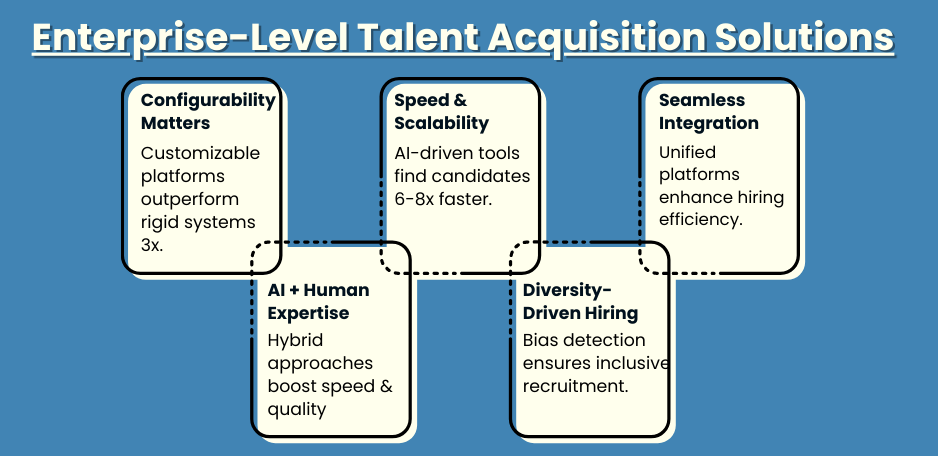
Avature’s research reveals something surprising: enterprise solutions succeed or fail based on configurability. Their data shows that highly configurable platforms deliver three times better outcomes than rigid systems.
Key Enterprise Requirements:
Scalability That Works Hunt Club’s analysis found that enterprise-grade talent acquisition tools identify qualified candidates 6-8x faster than traditional methods when appropriately scaled 1. But speed isn’t everything.
Integration Capabilities Modern enterprise solutions must provide:
- Single platform management
- Unified data insights
- Customizable assessment tools Implementation The most successful enterprises focus on:
- Clearly defined skill requirements
- Thorough interview processes
- Comprehensive background checks
What’s interesting is how SHRM’s research reveals successful enterprise implementations rely on:
- Specialty credentialing for talent teams
- Updated best practices training
- Flexible learning approaches here’s what most enterprise vendors won’t tell you: bigger isn’t always better. Some organizations found that highly targeted solutions outperformed all-in-one platforms. The key is matching the solution to specific organizational needs.
The most effective enterprise talent acquisition software combines AI-driven efficiency with human expertise. Companies using this hybrid approach see recruitment speeds increase while maintaining quality standards. Integration Modern enterprise solutions must prioritize diversity. Leading platforms now include:
- Bias detection tools
- Diverse talent pool access
Implementing Talent Acquisition Software Best Practices
Let’s cut through the noise and focus on what works when implementing talent acquisition software. Recent data shows that 60% of implementations struggle – but not for the reasons most think.
Start Smart, Scale Later
IBM’s HR transformation study revealed something counterintuitive. Companies that started small and scaled up saw 40% better adoption rates than those attempting full-scale rollouts
Core Implementation Best Practices:
Process Before Technology
- Map your current hiring workflow
- Identify bottlenecks
- Define clear success metrics
Strategic Integration Today’s best practices demand more than just technical integration. “Companies need to implement different methods of outreach and diversify their approach” Prevention Modern implementations must include:
- Blind resume reviews
- AI-powered bias detection
- Standardized evaluation criteria Common Pitfalls to Avoid
The biggest surprise from recent research? Traditional recruitment practices often fail not because of the software but because of poor implementation strategies
Key Success Factors:
- Centralized information management
- Streamlined workflows
- Continuous feedback loops
- Regular stakeholder communication
Remote Capabilities
The landscape of 2024 demands robust remote hiring capabilities. “Coupling applicant tracking systems with video conference software” has become a crucial best practice.
Training and Adoption
Most vendors won’t tell you that even the best talent acquisition software fails without proper training. Successful implementations include:
- Regular training sessions
- Clear documentation
- Support systems
- Change management strategies
Continuous Improvement
The most successful organizations “solicit feedback from recruiters and hiring managers to identify bottlenecks and streamline workflows.”
Measuring ROI and Success Metrics for Talent Acquisition Software
Let’s examine how to measure return on investment for talent acquisition software beyond the typical vendor promises..
Core ROI Metrics
Time-to-Hire Impact Companies often focus solely on speed, but that’s only part of the story. “Talent acquisition ROI refers to the value gained from investing in talent acquisition efforts”. The objective metric should combine the following:
- Time savings
- Accuracy improvements
- Enhanced candidate experience
Cost Metrics That Matter Smart organizations track:
- Cost per hire
- Source effectiveness
- Recruitment marketing ROI
Quality Indicators
The most successful companies measure:
- New hire performance
- Employee turnover rates
- Team productivity impact Hidden ROI Factors
Most overlook this: “It’s not just about the obvious metrics. It’s the time saved, the accuracy improved, and the enhanced candidate experience translating into measurable gains.”
Strategic Measurement Approach
To effectively measure ROI:
- Define clear goals and KPIs
- Collect relevant data
- Analyze performance trends
- Adjust strategies based on insights Common Measurement Mistakes
Many organizations track the wrong metrics. “Identifying the right metrics is crucial in measuring the ROI of an ATS because it provides a quantifiable basis for evaluating its effectiveness”.
Advanced Analytics
Modern talent acquisition software should provide:
- Predictive hiring insights
- Source quality analysis
- Engagement metrics
- Diversity impact measurements
Long-term Value Assessment
Look beyond immediate metrics. “Securing and retaining top-tier talent is imperative for businesses aiming to thrive in today’s competitive environment.”
Future Trends in Talent Acquisition Software
The landscape of talent acquisition software is evolving faster than ever. Based on recent research and market analysis, let’s explore what’s coming next.
AI Integration Reaches New Heights
According to recent surveys, “67% of respondents see increased AI usage as a top talent acquisition trend for 2025”. This isn’t just about automation but more intelligent, more predictive hiring.
Key Emerging Trends:
Skills-Based Hiring Takes Center Stage The future focuses on capabilities over credentials. “Digital transformation and skills-based hiring are reshaping how organizations approach talent acquisition.”
Automation Evolution: “AI-powered tools are streamlining various aspects of hiring, from sourcing candidates to screening resumes and scheduling.” But it’s not about replacing humans but enhancing their capabilities.
Market Growth and Innovation
The industry is experiencing remarkable growth. “The talent acquisition tech and services market is surging (6.2% CAGR) to nearly USD 290 billion by 2034.”
Emerging Priorities:
Diversity and Inclusion Focus: “Diverse organizations are reportedly more innovative, profitable, and better at capturing new markets.” Modern talent acquisition software is evolving to support these goals.
Hybrid Workforce Solutions “HR teams will continue to face challenges as they figure out how to navigate the tricky issues that a hybrid workforce brings.”
Technology Integration
Future talent acquisition software will need to provide:
- Seamless remote hiring capabilities
- Enhanced candidate experience
- Predictive analytics
- Integrated learning platforms
What’s Actually Coming
Organizations need “a streamlined talent acquisition process, from job postings to onboarding, to quickly fill the talent gap.” The future of recruitment technology focuses on the following:
- Real-time adaptation
- Personalized candidate journeys
- Predictive success modeling
- Enhanced collaboration tools
Final Thoughts
The recruitment landscape has shifted dramatically. Research from Gartner shows that companies using modern talent acquisition software see a 75% boost in hiring team productivity and a 31% increase in hire quality. These aren’t just numbers—they represent real teams finding and securing better talent faster.
Innovative companies are moving beyond traditional hiring methods. Take Spotify’s story – they transformed their hiring process with AI-powered talent acquisition software, cutting time-to-hire by 40% while improving candidate quality. A recent McKinsey study reveals that organizations using advanced recruiting technology are three times more likely to improve hiring outcomes.
Your recruitment process deserves better tools. Modern talent acquisition software brings:
- Smart candidate matching that actually works
- Real-time analytics you’ll actually use
- Mobile-first experiences candidates love
- Time-saving automation that makes sense
Start by evaluating your current process. Where are the bottlenecks? What frustrates your hiring managers? Book a demo to see how modern solutions can transform these pain points into strengths.
FAQs
What makes modern talent acquisition platforms different?
Today’s talent acquisition software solutions go beyond basic applicant tracking. They use AI to learn your hiring patterns, predict candidate success, and automate repetitive tasks. The Deloitte Human Capital Trends report shows that AI-powered recruiting tools improve candidate quality by 35%.
Will our team actually use it?
Modern platforms are built for real people. The interface feels natural, like using your favorite apps. Most teams master the basics in days, not weeks.
What about our existing HR tools?
Integration is smoother than ever. Leading talent acquisition software connects seamlessly with your current systems – from HR platforms to calendar apps.
Can we measure the impact?
Yes – in real numbers. Track everything from time-to-hire to cost savings. Companies typically see ROI within the first quarter through reduced agency fees and faster hiring alone.
How secure is our data?
Enterprise-grade security comes standard. Your data stays protected with bank-level encryption and regular security audits.
The best companies aren’t just filling positions – they’re building their future workforce. Modern talent acquisition software makes that possible. See how it can transform your hiring process – schedule a personalized demo today.


